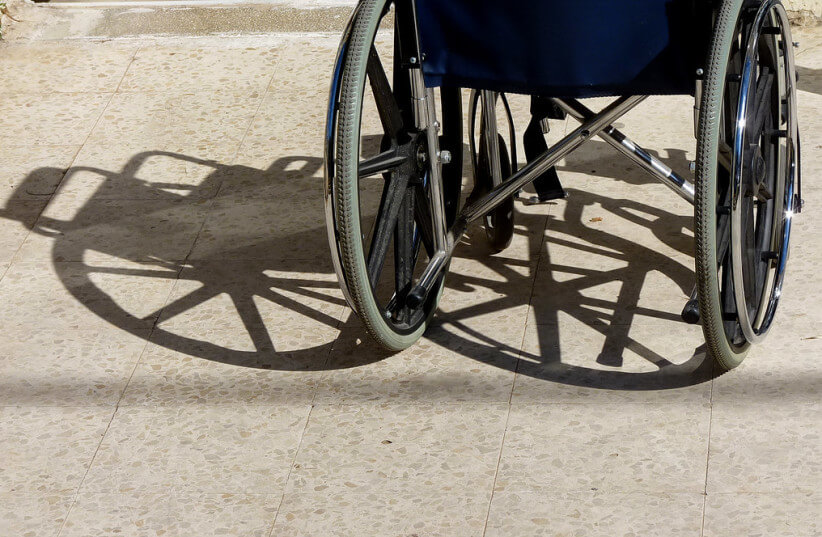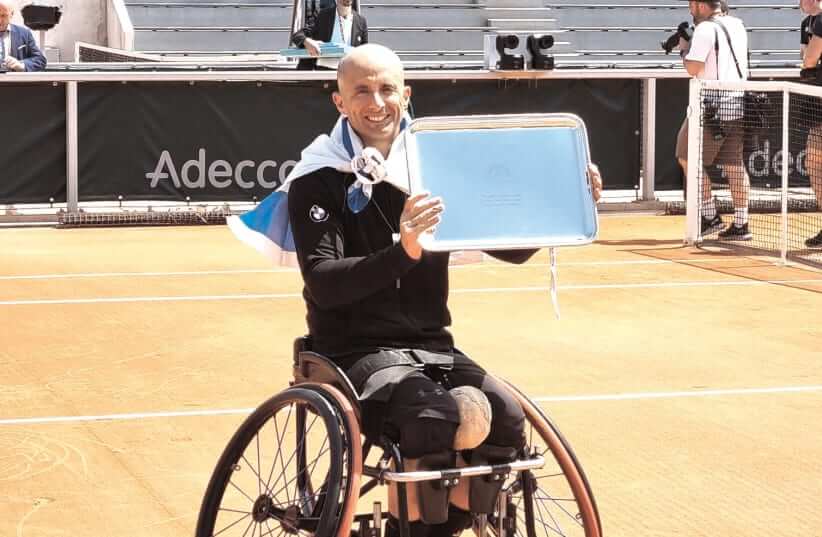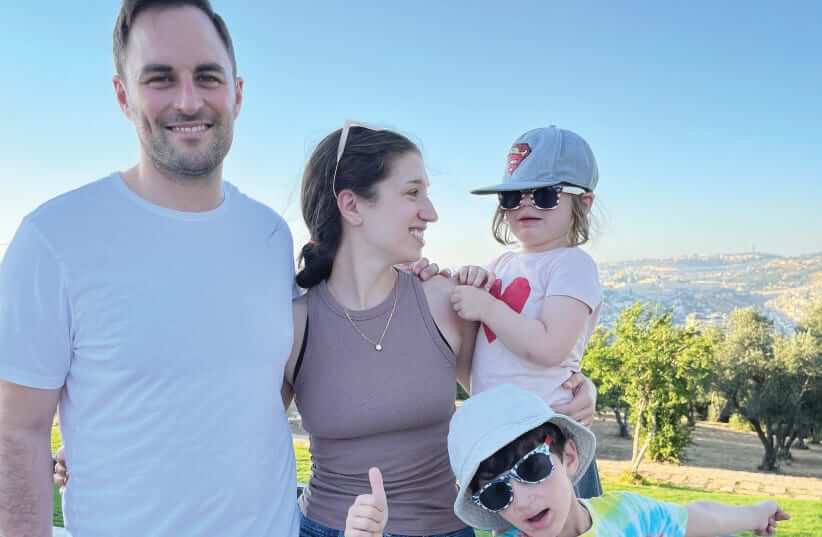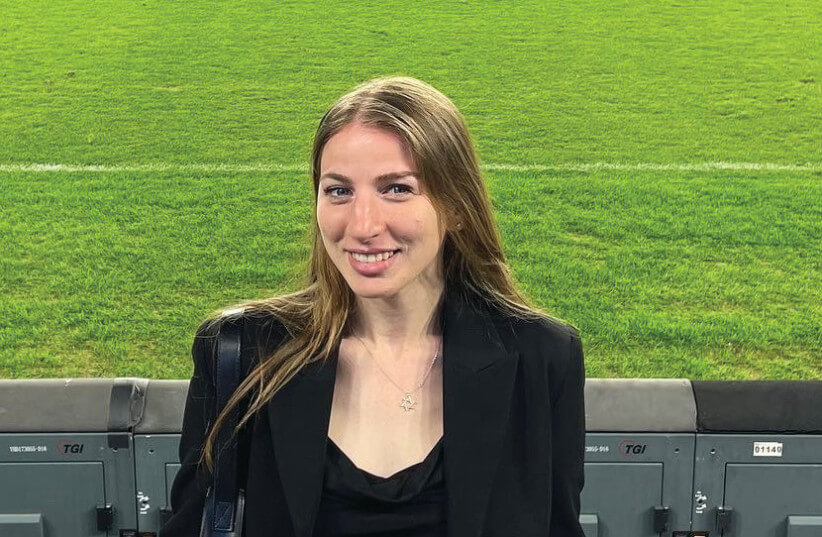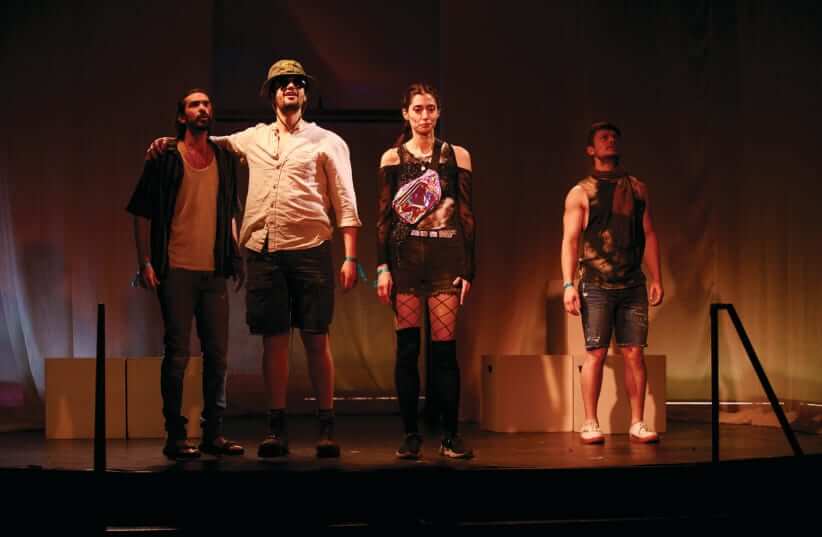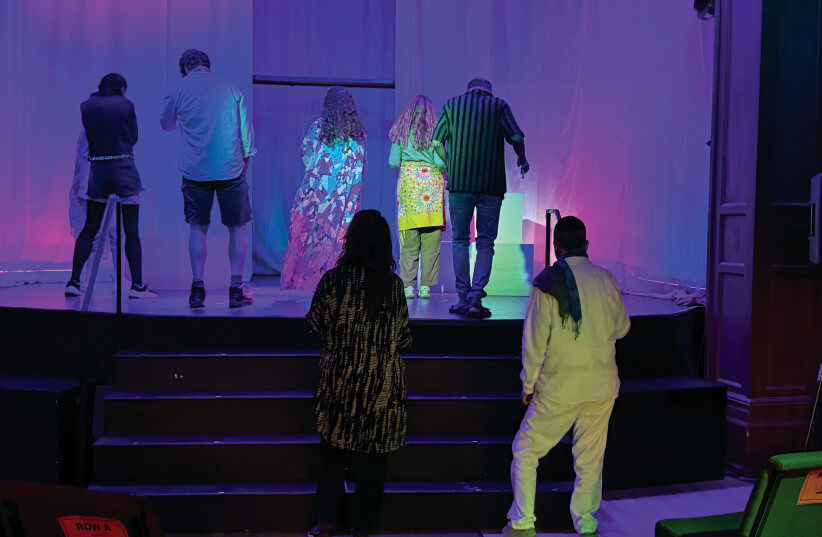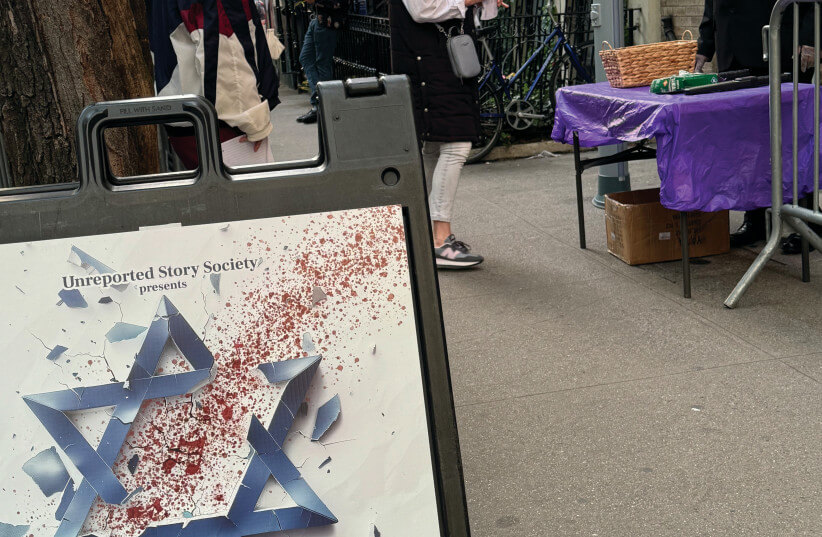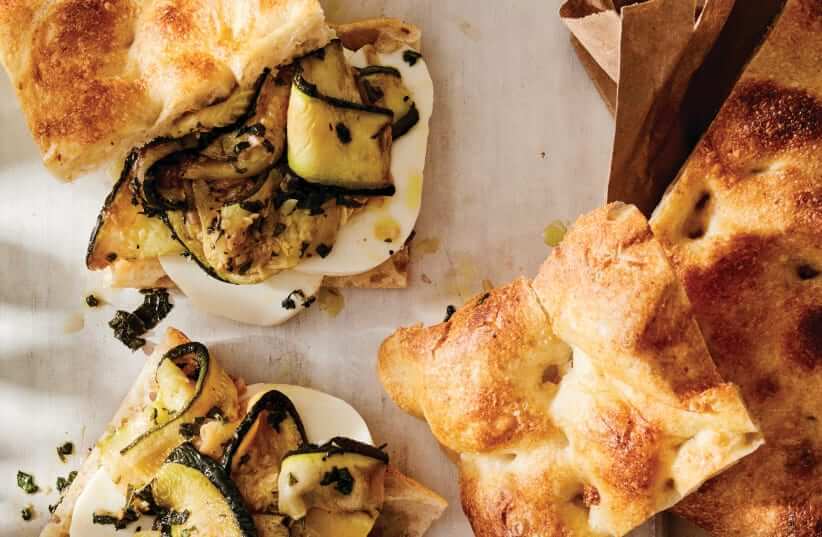The original article is published at JPost.com
“I have been seeing a strengthening of people’s Zionism since October 7. People are prouder than ever to be Zionists and looking to come to Israel and to help the Jewish homeland.”
Even as the war and hostage crisis continued in Israel, 300 American Jews recently demonstrated that their determination to make aliyah is greater than ever.
On May 29, from noon to 9 p.m., Jewish singles, young marrieds (some expecting first children in the very near future), families with young children, older couples – some with kippot, hats, or covered hair, others in shorts and T-shirts – made their way to a hotel in Teaneck, New Jersey (exact location withheld for security reasons), for the Nefesh B’Nefesh (NBN) Aliyah-in-One event, geared to make the upcoming aliyah of attendees that much smoother.
All attendees were hopeful that the ads sent by Nefesh B’Nefesh would indeed be true: “Bring us your docs and we’ll speed up the clocks!” and “Do you still have tasks to complete your aliyah process? Aliyah-in-One is The program for you. If you are planning to make Aliyah in 2024, join us to get all your aliyah services under one roof.”
Attendees were not disappointed. After passing through security at a hotel whose location was only disclosed after people registered online, guests were given a bracelet at registration. Those arriving for on-site Jewish Agency interviews presented original documents (carefully detailed on the Nefesh B’Nefesh website) for scanning and waited for a careful review, followed by a thorough interview.
Most “passed” with flying colors; at least one very religious-appearing couple in their 60s remained upbeat, despite being told that the letter from their rabbi verifying their Jewish status required further scrutiny (they were told the rest of the interview could proceed over Zoom).
MIREL HOROWITZ hopes to move to Jerusalem in September. (credit: Courtesy Mirel Horowitz)
Visitors were greeted with an extraordinary display of snacks and drinks, which would prove helpful as they waited for one-on-one drop-in consultations at booths devoted to absorption issues, education, jobs, and communities.
Other booths provided services essential to the aliyah process, including fingerprinting and the apostille of documents. (An apostille is a form of authentication that seeks to simplify the process of legalizing and authenticating public documents so that they can be recognized internationally in foreign countries that are members of the 1961 Hague Convention Treaty.)
Those in attendance are universally undeterred by the current situation in Israel and reported feeling even more determined to make aliyah this year.
Mirel Horowitz, 24, a Jewish day school teacher at Yavneh Academy in Paramus, New Jersey, grew up in a Zionistic family, spent a gap year in Israel, has siblings in Israel, and recently returned from helping friends whose spouses were on reserve duty.
“I always wanted to move to Israel. This [current situation] was my pull,” she says.Horowitz started her aliyah process in 2020, before the COVID pandemic, and feels that “now is the time. I am young, single – why not?!”
She further notes, “I feel more connected to my spirituality in Israel.”
Horowitz acknowledges she will miss her family but reports having a support system in Israel.
She has been focused and efficient as she approaches the aliyah process. “I opened my laptop to NBN since I knew they were helping with the process, and applied. I was assigned an adviser and started getting emails about the process and events. I saw the NBN all-in-one event could help with the apostille of my birth certificate and with fingerprinting, so I went.”
While at the event, Horowitz also learned about study and career options in Israel. She hopes to move to Jerusalem in September.
Sarah and Mike Brasky, both 37, of Park Slope, Brooklyn, are racing against the clock to get everything done as the aliyah date for them and their two children, Liam, seven, and Eva, four, nears.
Sarah, an educator who started and ran a nonprofit agency that fosters dogs, notes that as her children have gotten older and “the focus is not on the day-to-day of feeding and clothing,” she and her husband have been able to take a step back and consider longer-term life plans and priorities.
“In the last couple of years, we wanted to shake up our lives a little, without completely going out of our comfort zones.”For the Braskys, this meant considering moves to New York suburbs or to another state.
Wherever they would live, having a strong connection to Judaism and Israel would be important. While Sarah reports that their lives were filled with many of those elements, including camps, Hebrew-language programs, Shabbat, and PJ Library, “To some degree it wasn’t satiating our desire for a stronger connection,” she notes.
After spending one month in Israel last summer, where they lived in a home in Jerusalem, the children attended Ramah day camp, and Mike worked part-time from his law firm’s Tel Aviv office, the idea of moving to Israel began to percolate.As their summer in Israel began to wind down, they began to realistically explore Israel as an option. Says Sarah, “Only at the tail end, I said, ‘Maybe we should explore having the firm give permission to work out of the Tel Aviv office. It didn’t take Mike much convincing! We did not make much progress at first, then Oct. 7 came – that did not dissuade us one iota!”
After a “pause” of two to three months, Sarah reports, “We have been full steam ahead for the past few months.”
She acknowledges that friends often ask, “Are you sure now is the right time?” Sarah replies, “I feel good about it.” She adds, “Oct. 7 is not a factor whatsoever. That probably is the Zionist in me, with two parents and four grandparents who love Israel very much.” Sarah reiterates that she is “excited to live there right now” and offers that “what Oct. 7 changed was not our desire but our feeling of how important it is to instill love of Israel in our kids and not take it for granted.”
The Braskys appreciate the role NBN has played in their aliyah process. “We said we want to do this, but can’t devote full brain space – that’s where NBN comes in. They helped with the bureaucracy, and they gave us an adviser who was great giving us reminders about deadlines, guidance on apostilles, and other things.”
Sarah reports that Mike has primarily been responsible for all of the paperwork, while she has taken on all aspects related to “lifestyle,” including where to live and schools for the children. The Braskys plan to live in Tel Aviv when they arrive in mid-July.
“The idea of… meeting people from all over the world and speaking Hebrew” is appealing, and the Braskys have already begun preparing the children – and their 50 pound dog – for aliyah. “We waited till a couple of months ago, until we were sure.”
Sarah reports that the seven-year-old was a “little shocked,” then comforted when he learned he can still keep in touch with his best friend through video chat, and that he will make new friends through playing basketball and other structured activities.
Howard Friedman, a Teaneck pediatrician, and his wife, Paula, are making aliyah at a different life stage and with a very different approach than the Braskys.
While the Braskys are rushing to pack up their Brooklyn brownstone, which they hope to sell before their aliyah, and will be in search of a Tel Aviv apartment, the Friedmans are moving to the Baka (Jerusalem) home they have owned and visited regularly and frequently for the past eight years.
“It will make our absorption a little more familiar,” reports Dr. Friedman.
And they will be closer to three daughters, their spouses, and grandchildren, who all live in Ramat Beit Shemesh.
The Friedmans will keep their Teaneck house for now and likely pack up and sell it in the future. Unlike Mike Brasky, who can work for his US law from its Tel Aviv office, the experienced pediatrician is obtaining an Israeli medical license and proper orientation and training in order to practice medicine in Israel.
For Dr. Friedman, the aliyah process started at MedEx, a Nefesh B’Nefesh event, this past March, geared to help medical professionals transfer their medical licenses and meet with representatives from the Health Ministry Licensing Division, the Israeli Medical Association, Israeli health funds and hospitals. Friedman then completed most of the required paperwork for aliyah online through the NBS website.
“We paid a guy for the apostille, and came to the all-in-one fair for our Jewish Agency interview.”
Friedman reports that the process of obtaining his license through MedEx went “rather smoothly.”
He has already started his three-month period of histaklut [observation] where he is observed in action by other doctors. While in Israel in April, he spent one month in the pediatric emergency room. “It was fun and all very positive. I began learning how Israel does pediatrics and medicine.”
When this process is complete and the Friedmans are settled in Israel, he can decide between employment in a health fund, at Terem (urgent care), or in private practice.
Paula, who worked in his office for decades, will consider options for possible employment once she arrives in Israel.Paula and Howard report that they always “thought” about aliyah, though they note that when they married while in medical school, they knew they “had a long road ahead.” In addition, they had no family at the time in Israel. “There was a desire but not a drive,” reports Howard.
He playfully notes “I guess we did something right,” when he recounts the aliyah of three children within a five-year period.
The Friedmans were planning to make aliyah regardless of the current situation in Israel, but note, “It increased our desire to move to Israel.” On September 18, the Friedmans plan to be on a plane for their own aliyah.
WHEN MIREL Horowitz, the Brasky family, and the Friedmans make aliyah, they will follow in the footsteps of the 1,500 people from the United States and Canada who have made aliyah with the assistance of NBN since October 7, 2023.NBN offers the following breakdown of olim in the time period, by age:
0-17 – 24418-24 – 43225-34 – 33235-44 – 11745-54 – 7055-64 – 12065+ – 239
NBN reports that it has received over 9,700 requests to open aliyah files since October 7, which is an increase of 76% compared to the corresponding period last year (i.e. from October 7, 2022, through mid-May 2023).
Marc Rosenberg, NBN’s vice president for Diaspora partnerships, is pleased and optimistic with the increased interest in aliyah, and observes that people are “coming despite uncertainty, restrictions, and issues with flights.”
Rosenberg points out that “the next few weeks are critical” in understanding aliyah numbers and trends. He points out that most people who make aliyah come in June, July, or August, and points out that there was a similar increase in aliyah in 1968 and 1969 (following the Six Day War of 1967) and in 1974 and 1975 (following the Yom Kippur War of 1973).
He offers that the typical timeline for people making aliyah is 12-18 months. He observes that “most people have turned the dial 1 degree closer to Israel,” and that the current situation has “helped move people closer to exploring Israel.”
Yitz Motzen, an aliyah adviser in the aliyah guidance division of NBN, is seeing this increased interest in aliyah in his daily work.
“We are definitely seeing an uptick in aliyah interest in our day-to-day work.
“In terms of the why: I have been seeing a strengthening of people’s Zionism since October 7. People are prouder than ever to be Zionists and looking to come to Israel and to help the Jewish homeland, not just in the short term, with volunteering, but in the long term, via aliyah. I think it [Oct. 7] awoke in many people an understanding that this is our only homeland, and they want to be on the front lines of Jewish history as it unfolds. When something happens to your family, you don’t run away. You do the opposite. You want to be closer to them.“People not only want to stand with Israel. They want to stand in Israel.”
